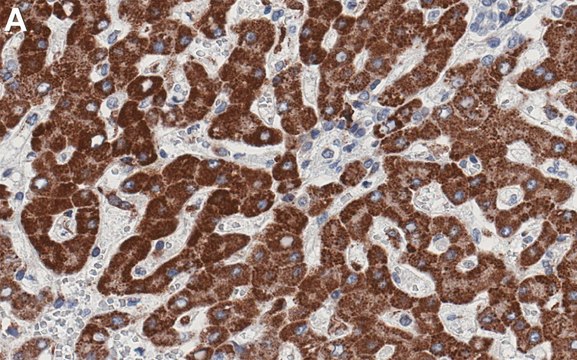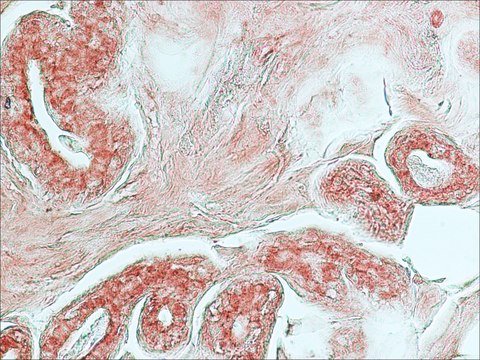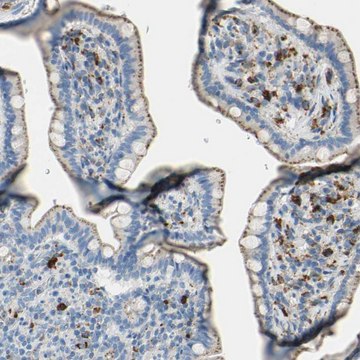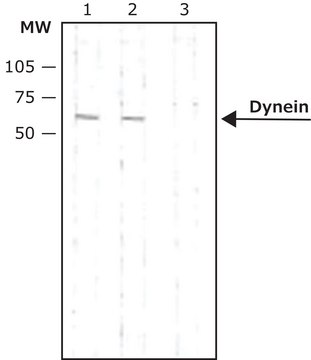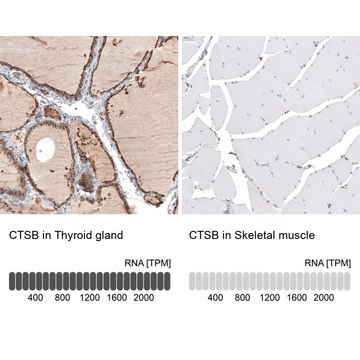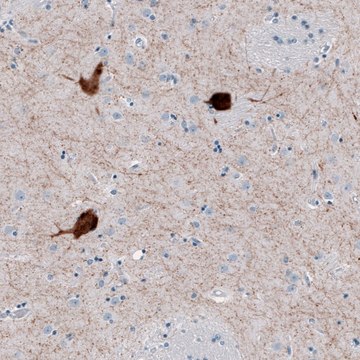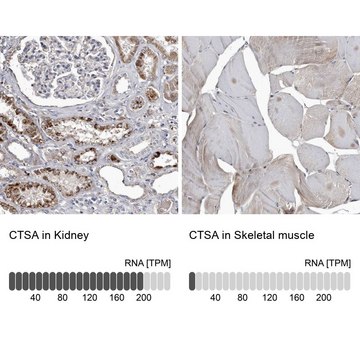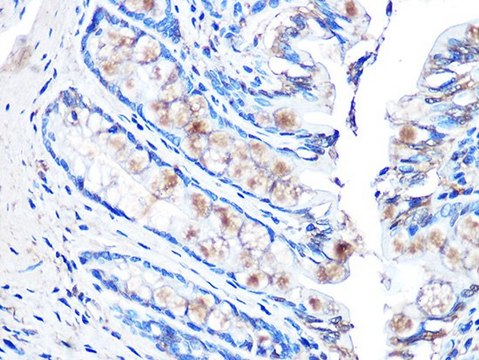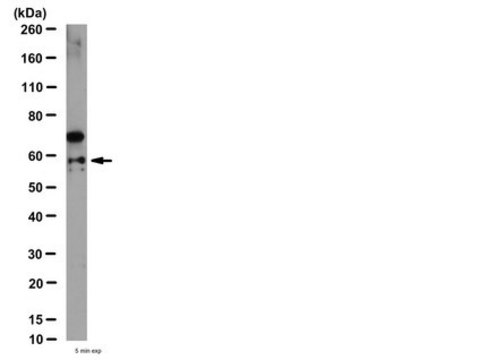推荐产品
生物来源
mouse
质量水平
抗体形式
purified from hybridoma cell culture
抗体产品类型
primary antibodies
克隆
CTD-19, monoclonal
表单
buffered aqueous solution
种属反应性
human, rabbit
浓度
~1.0 mg/mL
技术
immunoblotting: 2-4 μg/mL using human breast cancer MCF7 cell line
immunofluorescence: 5-10 μg/mL using HeLa cells
immunohistochemistry: 10-20 μg/mL using heat-retrieved formalin-fixed, paraffin-embedded human liver sections
同位素/亚型
IgG2a
一般描述
Anti-Cathepsin D antibody, Mouse monoclonal (mouse IgG2a isotype) is derived from the CTD-19 hybridoma, produced by the fusion of mouse myeloma cells and splenocytes from BALB/c mouse immunized with cathepsin D purified from human liver. Cathepsin D (CatD or CTSD) is synthesized in the rough endoplasmic reticulum as pre-proprotein. After removal of signal peptide, the pro-CatD is targeted to endosomes to form an active, ~48 kDa, single-chain intermediate then to the lysosomes to form the fully active mature protease, composed of a ~30 kDa heavy chain and a ~14 kDa light chain.
免疫原
Cathepsin D Purified from human liver
应用
Anti-Cathepsin D antibody, Mouse monoclonal has been used in:
- immunoblotting
- immunohistochemistry
- immunofluorescence
生化/生理作用
CatD plays numerous physiological functions in the cells including metabolic degradation of intracellular proteins and the activation of enzymatic precursors. In the central nervous system, CatD is particularly important for the control of neuronal homeostasis, cell migration and interneuron communication. CatD-mediated proteolysis mediates the degradation of unfolded/oxidized protein aggregates in lysosome. The level of CatD synthesized by the cells is increased in response to mitogenic signals from estrogen, epidermal growth factor (EGF), fibroblast growth factor (FGF), and insulin like growth factor-I (IGF- I). The ability of tumor cells to invade the extracellular matrix has been attributed to cathepsins released by tumor cells or associated with its plasma membrane.
外形
Solution in 0.01 M phosphate buffered saline, pH 7.4, containing 15 mM sodium azide.
未找到合适的产品?
试试我们的产品选型工具.
储存分类代码
10 - Combustible liquids
闪点(°F)
Not applicable
闪点(°C)
Not applicable
法规信息
常规特殊物品
历史批次信息供参考:
分析证书(COA)
Lot/Batch Number
Cathepsin D as a therapeutic target in Alzheimer's disease.
Di Domenico F, et al.
Expert Opinion on Therapeutic Targets, 20(12), 1393-1395 (2016)
The role of cathepsin D in the pathogenesis of human neurodegenerative disorders
Vidoni C, et al.
Medicinal Research Reviews, 36(5), 845-870 (2016)
Veronika Stoka et al.
Ageing research reviews, 32, 22-37 (2016-04-30)
Lysosomes and lysosomal hydrolases, including the cathepsins, have been shown to change their properties with aging brain a long time ago, although their function was not really understood. The first biochemical and clinical studies were followed by a major expansion
Nuclear cathepsin D enhances TRPS1 transcriptional repressor function to regulate cell cycle progression and transformation in human breast cancer cells
Bach AS, et al.
Oncotarget, 6(29), 28084-28084 (2015)
Clivia Lisowski et al.
Autophagy, 18(8), 1785-1800 (2021-11-17)
Modulation of the host cell cycle has emerged as a common theme among the pathways regulated by bacterial pathogens, arguably to promote host cell colonization. However, in most cases the exact benefit ensuing from such interference to the infection process
我们的科学家团队拥有各种研究领域经验,包括生命科学、材料科学、化学合成、色谱、分析及许多其他领域.
联系客户支持